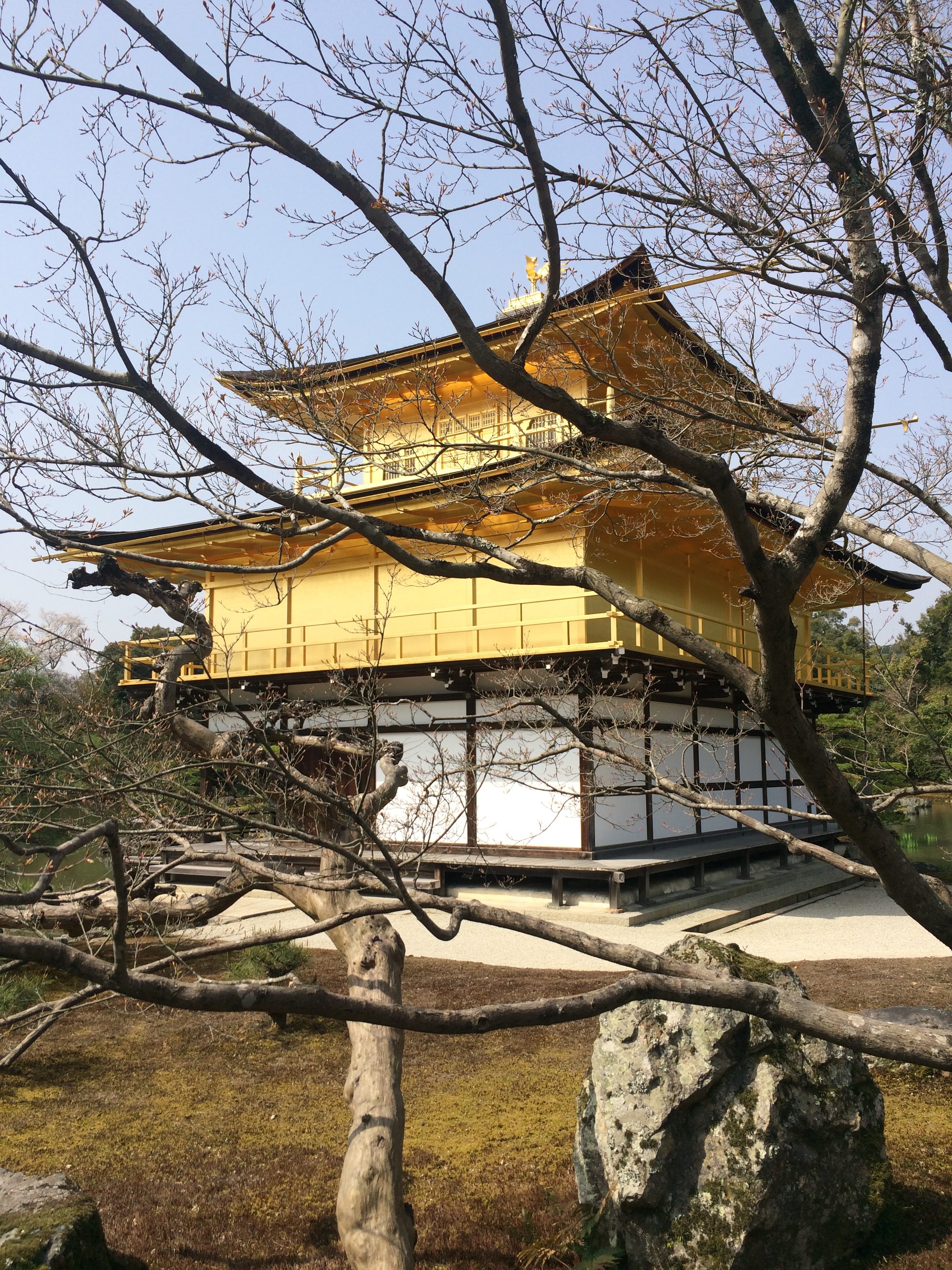
Kinkakuji: The Temple of the Golden Pavilion
In 1950, a troubled acolyte burned Kinkakuji (the Temple of the Golden Pavilion) to the ground. Then he tried to kill himself. Is it wrong to say that I would have liked to have been there, in Kyoto, for that first part?

I visited Kinkakuji during the height of the cherry blossoms’ ostentatious display. It was a place of almost otherworldly beauty: like a desert sky on a moonless night or an alpine lake on a cloudy day.
Part of Kinkakuji’s allure, other than the shining, obvious beauty, was seeing it surrounded, guarded as it were, by trees at all stages of their yearly cycles. The wide pines were green as ever. The cherry trees were in full pink and white explosion. The beeches and their broadleaf fellows were, as yet, nude.
And so it was easy to consider Kinkakuji in its cycles of birth, existence, and destruction. As beautiful as it was before me, in existence, I suppose it would have been equally beautiful in that next phase, destruction.
Imagining the flames and the beauty was so easy, in part, because Yukio Mishima did most of it for me in his novel The Temple of the Golden Pavilion. The novel is based on the 1950 burning of Kinkakuji. It is a meditation on the transcendent beauty of the place, as well as the psychology of one bent on achieving an act of pure destruction.
An Act of Pure Destruction

Near the end of the novel, as the young acolyte clarifies his plan to destroy the temple, he considers the contradictory difference between murdering a human and destroying a beautiful object, like Kinkakuji:
If I were to set fire to the Golden Temple, which had been designated as a National Treasure in 1897, I should be committing an act of pure destruction, of irreparable ruin, an act which would truly decrease the volume of beauty that human beings had created in this world.
The young man sees his act as a sort of koan which would be of educational value to the world.
I don’t know if there is educational value in the destruction of beauty. I also don’t know if education was among the goals of the historical young man who burned the historical Kinkakuji to the ground.
I do know, however, that if such a burning really was an act of irreparable ruin, that I didn’t feel the less for it, standing there with the trees and tourists in front of Kinkakuji in 2018.
